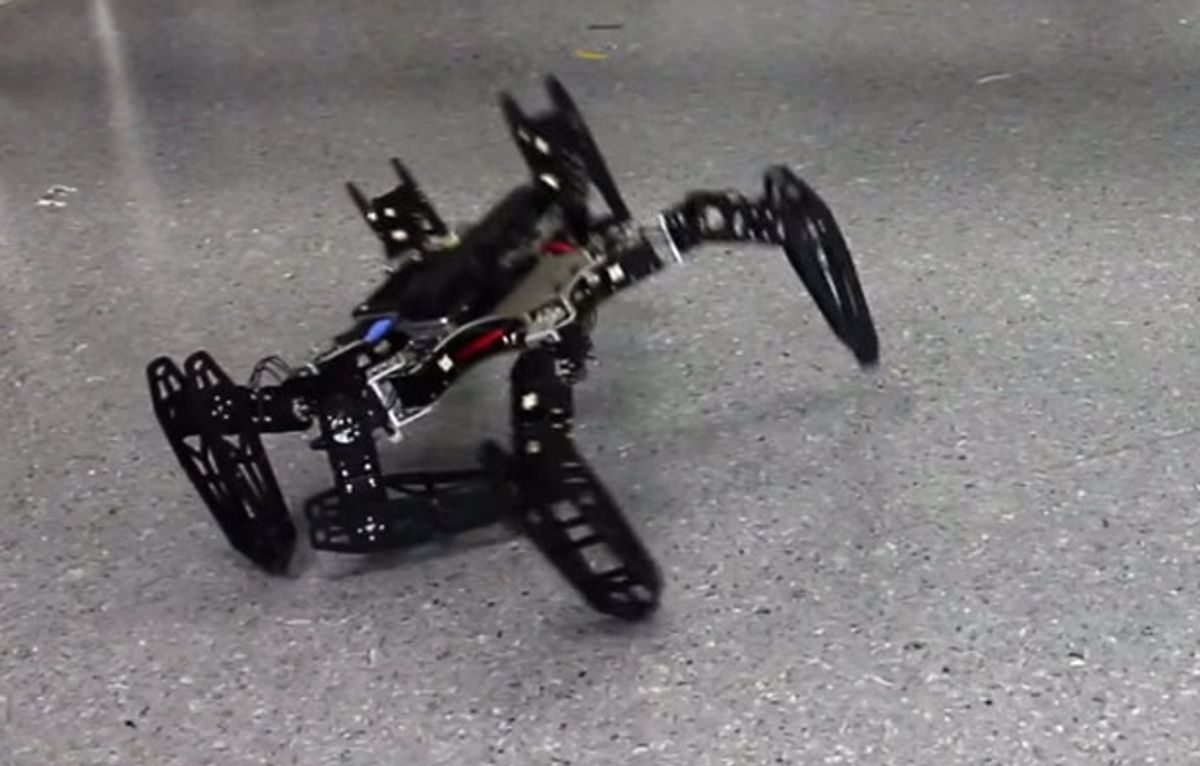Last year, we wrote about a hexapod robot that could teach itself to walk after you chopped its leg off. It was awesome. It still is awesome, because if you have any experience with robots, you know that they malfunction almost continuously. Last week, we saw some updated results from the same researchers, and after perusing both papers with much scratching-of-heads and stabbing-out-of-eyes, we've figured out what's new and exciting for 2014.
First, let's take a look at the aforementioned awesomeness of a robot that can keep on coming for you even after it loses a leg:
Okay, so here's what the newness seems to be: in last year's paper, the robots relied on experimental discovery to determine the best compensatory gait to overcome whatever damage they were experiencing. So, whenever something bad happened, they'd try a whole bunch of stuff to gradually figure out a better gait. This worked fine, but took about 20 minutes each time, which (I guess) seemed like a very long time to the researchers.
In the more recent paper, the damage adaptation time has been reduced to 2 minutes by eliminating most of the experimental discovery step. Instead, the robot runs through a bunch of pre-discovered gaits (a "six dimensional behavioral repertoire"), evaluates a series of them, and then selects the best. This repertoire is quite extensive, containing approximately 13,000 different gaits. It took two weeks to create using a robot model running in simulation (20 million iterations of a gait generation algorithm), but since you only ever have to do it one single time for each robot (and it can be done at design time before deployment), it saves you time in the field, which is where time is actually important.
The difference between 20 minutes of work to develop a new gait and 2 minutes of work is definitely significant for small robots, which are limited in both computational power and battery life. As researchers seek to emphasize simplicity and low cost (in order to deploy more robots efficiently), anything that can make each individual robot more capable, even a little bit, can make it much more likely that a given task will be completed successfully.
Evan Ackerman is a senior editor at IEEE Spectrum. Since 2007, he has written over 6,000 articles on robotics and technology. He has a degree in Martian geology and is excellent at playing bagpipes.



